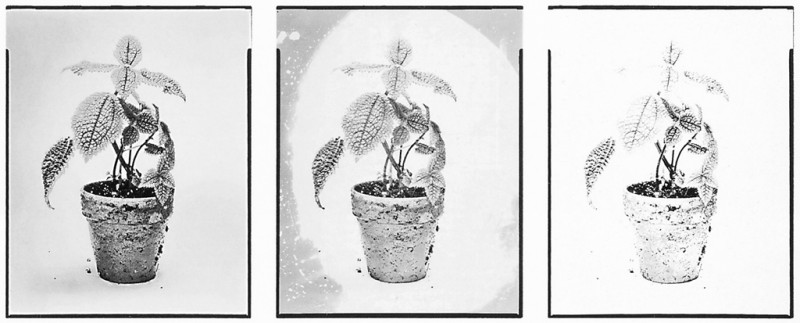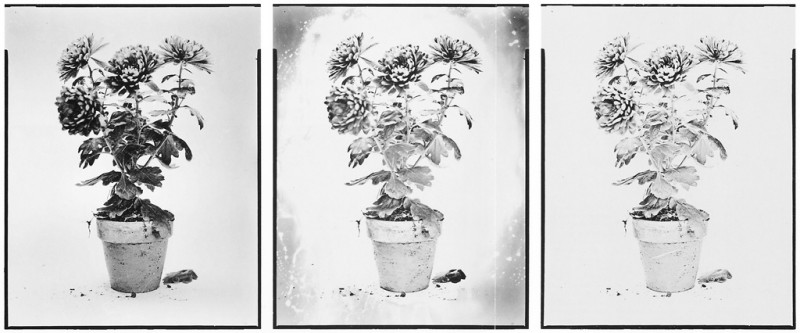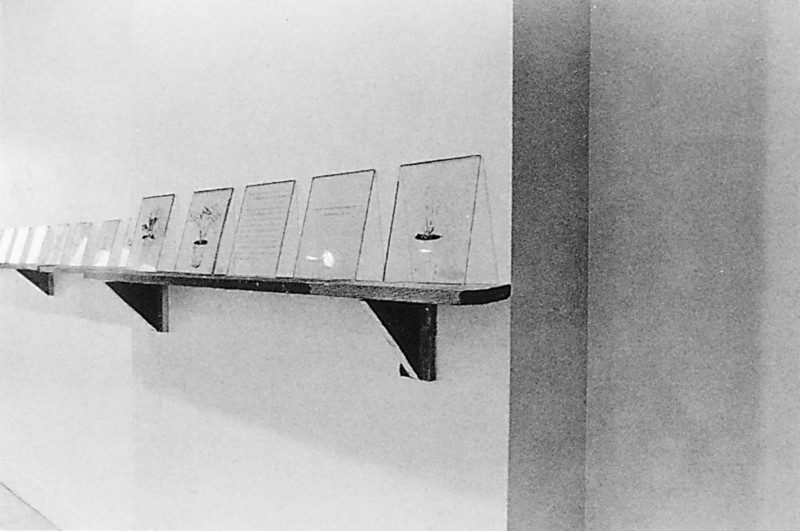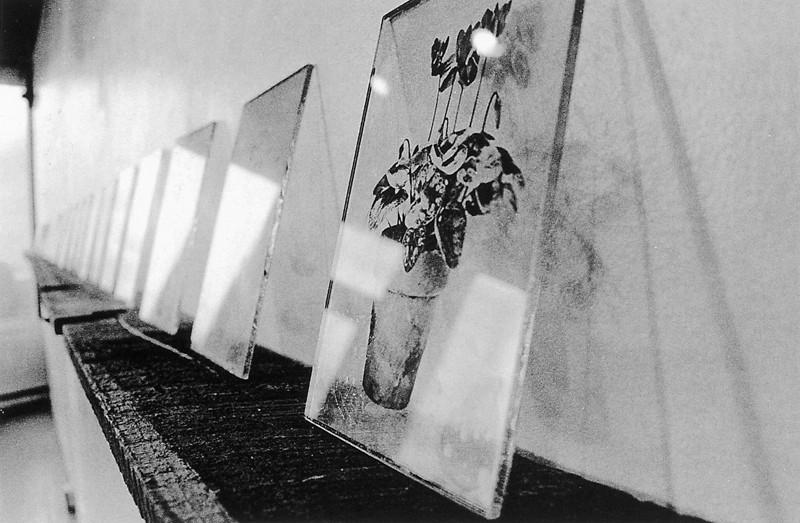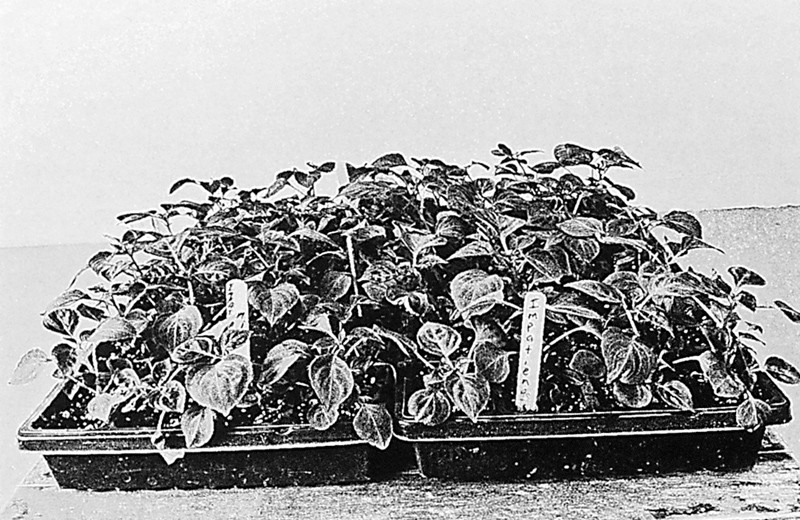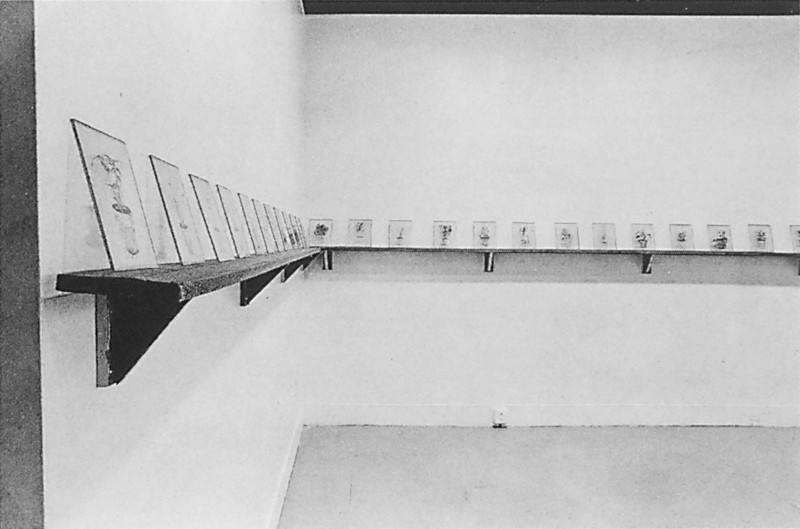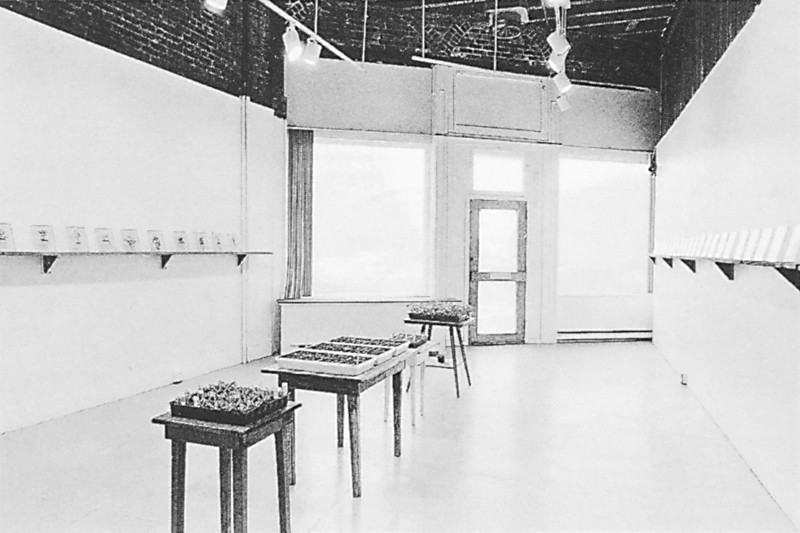[Summer 1995]
by Sara Hartland-Rowe
I heard a story a few years ago about a nineteenth-century photographer. His entire body of work consisted of hundreds of glass-plate negatives that no one wanted when he died. Eventually, someone took the glass plates to make walls for a greenhouse.
Through exposure to the sun over time, the images faded until the glass became clear. Recently, when I moved into a new apartment, I found four small houseplants resting in margarine containers. I kept watering them so that I wouldn’t feel guilty about them dying. When I found out that the couple that used to rent the apartment had split up, I let the houseplants die.
THE GLASS-PLATE HOUSEPLANTS WILL BE WATERED DAILY AT ELEVEN A.M. EACH DAY THEY WILL FADE A LITTLE MORE.
In one of the slides that Kelly Lycan lent to me of her show Green House Plants,1 the artist herself can be faintly seen, reflected in the glass plate that she is capturing permanently in her documentation. Just as the delicate images of sepia-coloured houseplants have faded from these plates through Lycan’s reverse chemical processing, so her image vanished from the plate as she moved about the gallery tending both greenhouse and houseplants. The passage from one state to another is the operative principle of this installation: the timeless space of the gallery is transformed into the living space of a greenhouse in which growth and decay move gently, inexorably, but perhaps not ineradicably, from stage to stage.
Lycan tended four kinds of houseplants throughout the duration of the show. Each of the four tables in the centre of the gallery held a flat of seedlings or young plants: on the first table were petunias -Summer Madness, Red Madness, and White Madness; on the second, touch-sensitive plants that folded in their leaves when lightly brushed; on the third, opportunistic broccoli that had taken root in the husk of a withered celery stalk; and on the fourth, the most developed – the closest to flowering and then to decay – impatiens. Surrounding these tables, on shelves running along the walls of the gallery, were 75 glass plates. Both plates and shelves referred to earlier incarnations: the plates harkened back to the glass negatives used by photographers in the nineteenth century, while the shelves were made from boards taken from an old greenhouse. Two of the glass plates were clear save for a brief anecdote on each that spoke of the passing of things held dear – one’s love, or one’s work.
This was a space of nurturance, in which the young plants were protected by artificial heat and humidity. It was also the site of a carefully monitored disintegration; the tang of the chemicals mixed with water with which Lycan gradually erased images of houseplants from the glass plates mingled briefly with the scent of earth and growing things. The entire space was mediated by the only permanent forms in the room, the clear glass plates, which oxy-moronically described the restless passage of time.
For Lycan, the work contained polarities that she was obliged to confront – of permanence and impermanence, of remembrance and forgetting, and of presence and absence. Yet, the environment created in the gallery, which quietly alluded to cyclical changes, fused these oppositions into inseparable pairings. The fundamental process of photography -the movement of negative to positive, of light to dark – was enriched within the parameters of this installation. No longer a process by which an image is fixed permanently in place, unchanged by the exigencies of time or circumstance, Lycan’s activity highlights the permeable, vulnerable character of both living forms and human understanding.
Kelly Lycan has been granted awards from the Canada Council for the Arts and the Ontario Arts Council, and is exhibiting her photographs in galleries in Ontario, Nova Scotia, and western Canada. Her works have been included in prestigious art collections.
Sara Hartland-Rowe est diplômée du Nova Scotia College of Art and Design et possède une maîtrise de l’université de l’Illinois à Chicago. Elle a aussi fréquenté l’Ecole des beaux-arts de Boston. Elle a à son actif de nombreuses expositions au Canada et aux Etats-Unis. Elle publie à l’occasion des textes sur des artistes qui lui sont chers, dont Kelly Lycan.

